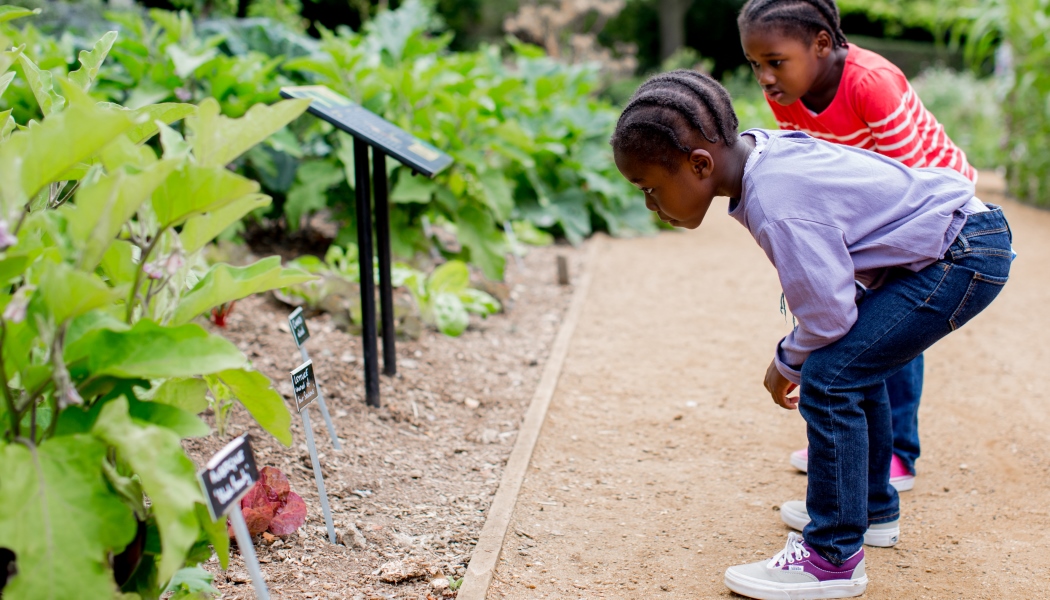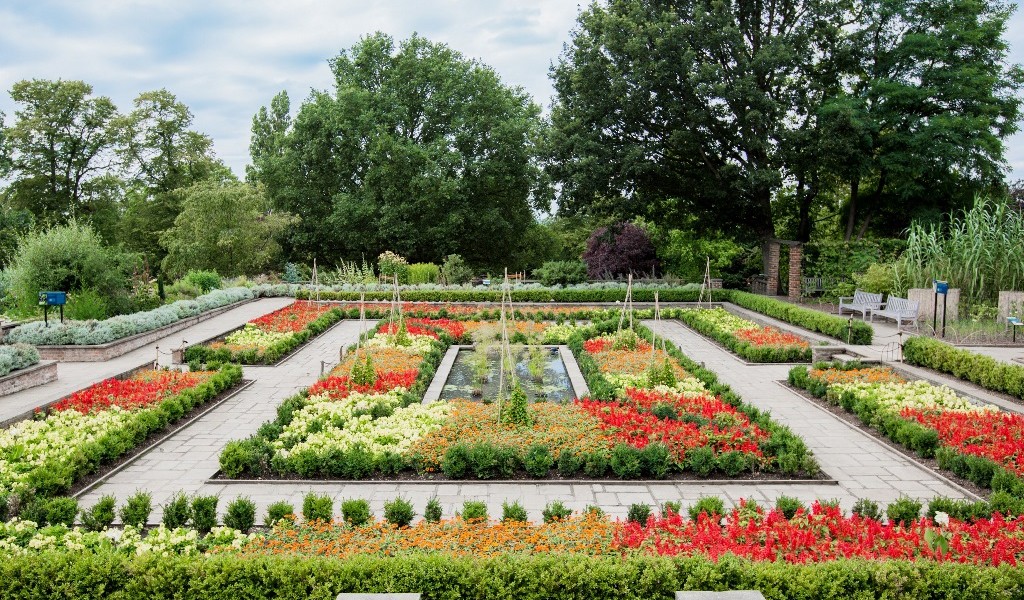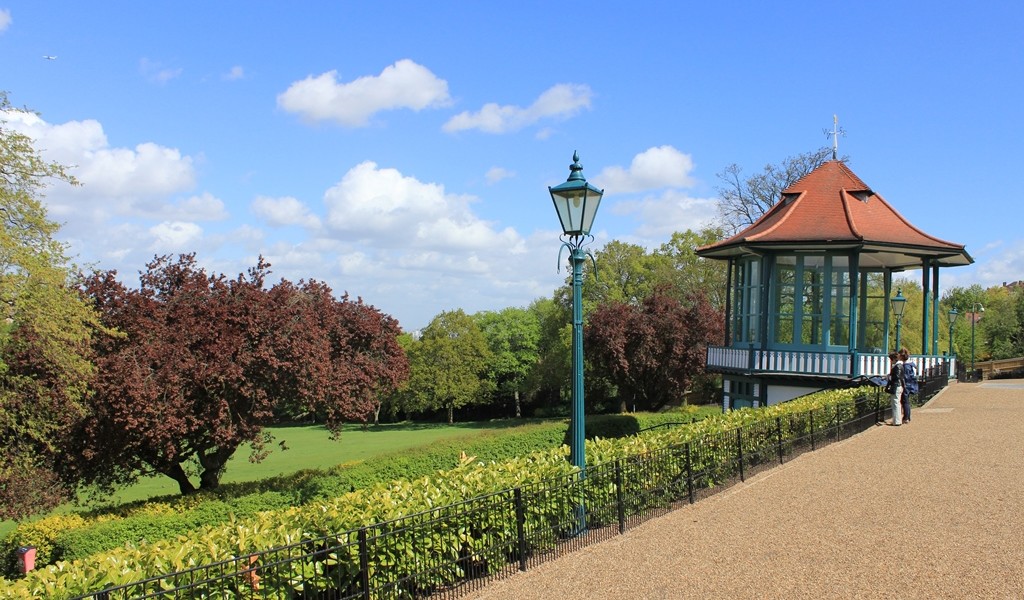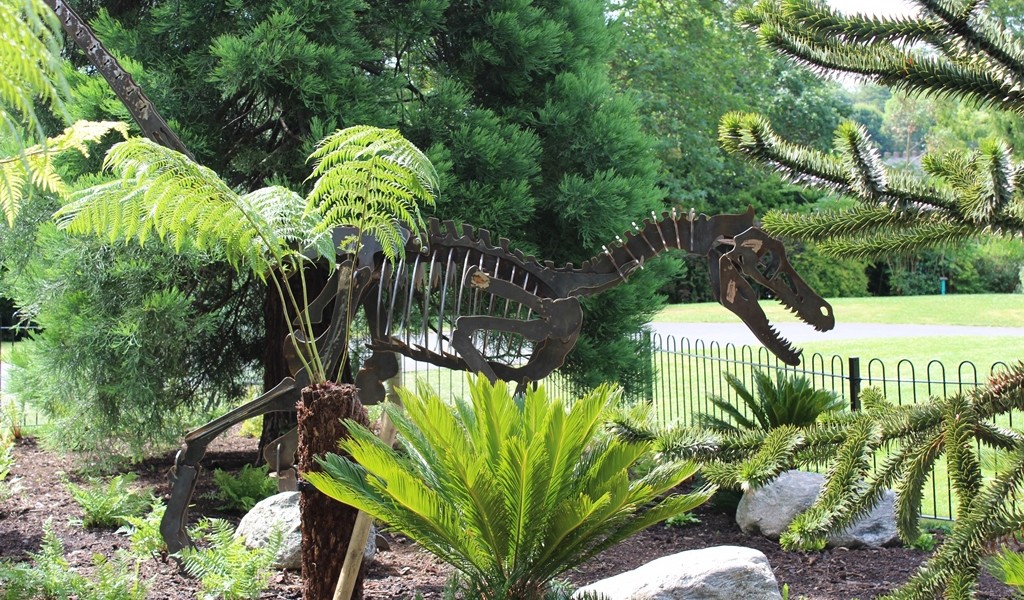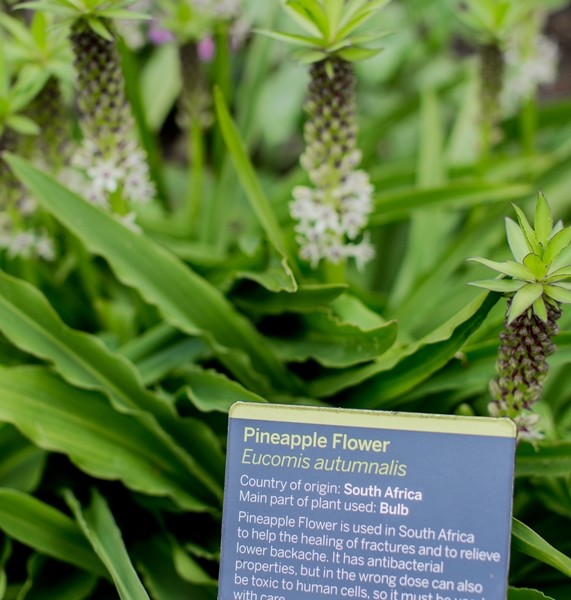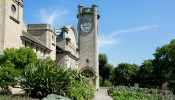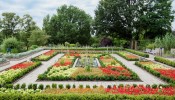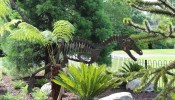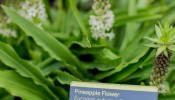When Frederick Horniman gave the Museum and Gardens ‘to the people in perpetuity’ in 1901 for ‘their recreation, instruction and enjoyment’ he also requested that the Museum and the Gardens be treated as a unity and that the indoor and outdoor collections be linked.
This means that everything the museum does is informed by this and by the team’s vision: ‘to use our worldwide collections and the Gardens to encourage a wider appreciation of the world, its peoples and their cultures, and its environments’.
The Horniman Museum and Gardens occupies a 16.5 acre site, much of which is open access and has 700,000 annual gardens visitors. The Display Gardens – including a Medicinal Garden, Food Garden, Sunken Garden, Dye and Material Garden and Sound Garden – and Animal Walk were created to unite the museum’s indoor and outdoor collections. All of these are sign-posted and have interpretation boards to give visitors a clear understanding of what is on display and the connection to what can be seen within the Museum.
A Prehistoric Garden was planted this summer and features ‘living fossils’ – plants which evolved up to 360 million years ago and continue to thrive today with the display also including a specially created Velociraptor steel sculpture.
As well as this the Horniman has pop-up garden displays that respond to the themes of the museum’s temporary exhibitions and summer season. This year, as part of the Brazil season, the museum has a Brazilian recipes garden, displaying all the plants you need to mix yourself a Caipirinha or cook up a delicious Feijoada stew.
“The Horniman Gardens have always been at the centre of the Forest Hill community and a destination for all visitors to south east London – whether they come to see the Gardens, participate in an outdoor event or activity, go for a walk, or relax on a bench,” says Nick Budden marketing and communications manager at the Horniman. “The Gardens provide access to outdoor spaces and experiences for individuals and groups who lack green or ‘wild’ spaces. The changing displays and engaging interpretation encourage them to return. Concrete paths throughout make the Gardens accessible for wheelchair users and for buggies.”
As well as being a relaxing outdoor park, the Horniman Gardens and Learning teams work closely together to maximise the potential of educational and community activities. Schools can book taught sessions that draw on our living collections of plants and animals: Seed Journeys, Garden Explorers, Animal Walk Discovery and Minibeasts all combine outdoor learning and enquiry-led activities in the Gardens Pavilion.
The Horniman’s summer season of family programming, from large festivals to its Big Wednesdays, use its outdoor spaces to their full potential, as site-specific performance areas, places to encounter art, places to explore and places to join in with participatory programming. The Edwardian Bandstand Terrace, with stunning views across London, is also home to professional and community music performances.
“Engaging our local community in front-facing volunteering roles brings benefits to those individuals, to the Horniman and to our visitors,” he says. “Volunteers from our local horticultural and animal management college Capel Manor regularly volunteer with our Gardens team, and visitors benefit from the additional interpretation that they provide.”
Throughout the gardens there is directional signage and information panels situated at key points and there are several panels exploring the history of the site and its architecture, the geography of the area and the panoramic view across London.
Although the team try to avoid technical language, the Medicine Garden is heavily interpreted with specimen panels for each plant, including its medical purpose and the part of the body it treats. The Dye Garden groups plants together based on the range of colours derived from them, using coloured yarns as attractive plant supports-cum-interpretation tools. An introduction to the garden draws links to objects in the collections and the Materials Garden has a panel per plant species, making a direct link to an object in the Museum made from the plant material.
In the Food Garden (a seasonal space) plants are displayed by food groups, with one panel per group, in addition to individual plant variety labels. The panels include open questions that draw links with the Museum collections, and ethno-botanic and historic information about the plants. The Prehistoric Garden panels introduce plant specimens that have survived since the time of the dinosaurs and highlight their adaptations. Words and pictures in the Animal Walk reference the Museum’s Natural History collection and look at the connection between domesticated animals and their wild relations. A panel in the interactive Sound Garden links to the Music Gallery, giving a description of the instruments, how to play them and guidance on care and safety.
The Horniman gardens are managed by a team of Gardeners, including dedicated volunteers, and Animal Keepers are on hand to ensure the upkeep of our outdoor spaces. The Gardens team grow from seed all the bedding and crop plants for the Display Garden every year and oversee the weekly maintenance of pruning, weeding, watering and deadheading is carried out to ensure everything looks at its best through the summer.
“Each day a team member carries out a visual site inspection to make sure the site is safe. Our tree collection is risk assessed every year by an independent tree expert, and we have a superb local tree surgeon firm that do all our tree maintenance works.”
The Horniman is committed to being as sustainable as possible and recycles its green and animal waste to provide quality mulch. Food waste from the Café is recycled in our Ridan food composter and water from the Aquarium’s filters is re-used for watering.
“We are very proud to have been awarded our twelfth consecutive Green Flag Award and our eighth Green Flag Community Award for our Nature Trail – the oldest nature trail in London and a haven for wildlife.”
While the Horniman encourages its 700,000 annual gardens visitors to explore – whether by themselves by following our directional signage, through one of our events or learning initiatives, or by following one of the trails on our website – their safety and that of our collections is of greatest importance. “Our Gardens team are on site from opening until closing time undertaking day to day planting, planning and maintenance – and keeping a watchful eye out for any repairs, or visitors in areas that they shouldn’t be in.” Fencing and user friendly signage discourages visitors from treading on and picking plants and flowers.
“We will continue to look at new and innovative ways of using our outdoor spaces to reflect our indoor collections. These may be permanent like our Prehistoric Garden, or temporary like the street art and favela installation that have been created as part of our Brazil season.”
In 2017 the Horniman’s summer programming will focus on India, which will again provide many opportunities to use the gardens for themed events and planting.

